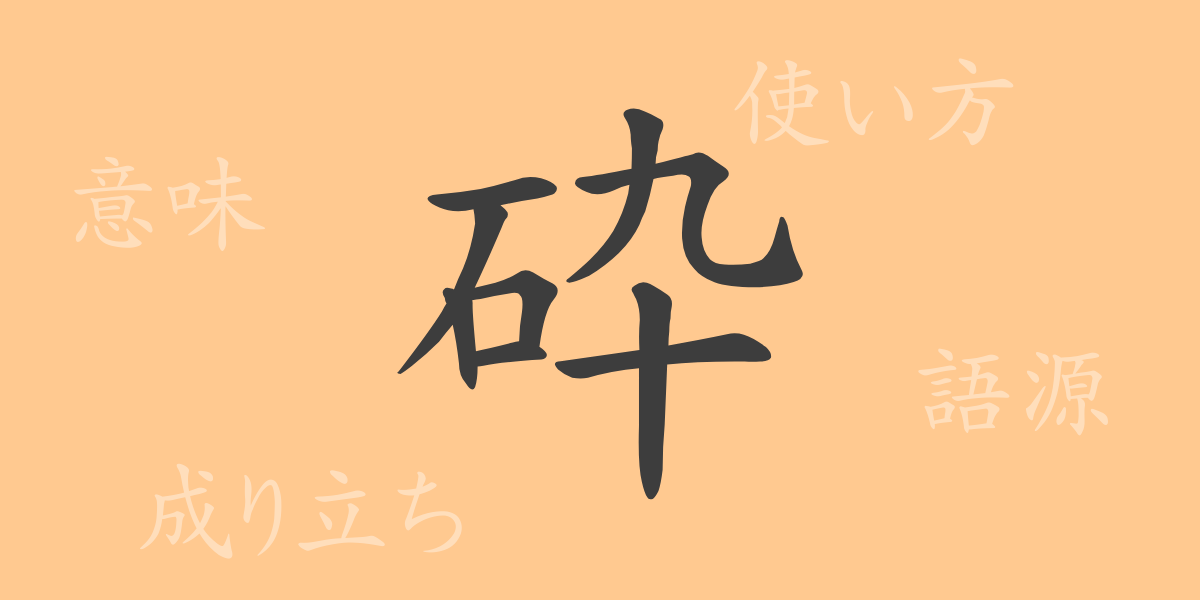There are numerous kanji characters in the Japanese language, each with its unique history and meaning. This time, we focus on the kanji “砕” (sai), exploring its origins and modern usage in depth. Although it is a kanji frequently seen in daily life, what kind of history does it have, and how is it used? Through this article, we will delve into the charm of “砕” (sai).
Etymology of 砕 (sai)
The kanji “砕” (sai) represents the act of smashing rocks or hard objects into pieces. This kanji consists of the radical “石” (ishi, meaning stone) and the shape “卆” (sotsu), which is an alternate form of “卒” (sotsu), originally meaning the end or completion. Thus, “砕” (sai) came to imply ending something by breaking it into pieces.
Meanings and Usages of 砕 (sai)
The kanji “砕” (sai) means to smash, break into pieces, or soften the heart. For example, in phrases like “石を砕く” (ishi o kudaku, smash a stone) or “氷を砕く” (kōri o kudaku, break the ice), it literally refers to the act of breaking hard objects. In a metaphorical sense, as in “心を砕く” (kokoro o kudaku), it means to be considerate or attentive. Thus, “砕” (sai) has a wide range of usages, from physical actions to abstract psychological actions.
Reading, Stroke Count, and Radical of 砕 (sai)
The kanji “砕” (sai) has several readings.
- Reading: In the on’yomi reading, it is read as “サイ” (sai), and in the kun’yomi reading, it is read as “くだ.く” (kudaku) and “くだ.ける” (kudakeru).
- Stroke count: The total stroke count for “砕” (sai) is 9.
- Radical: The radical is “石” (ishi), and it is classified among kanji related to stones.
Idioms, Phrases, and Proverbs Using 砕 (sai) and Their Meanings
There are many idioms, phrases, and proverbs in Japanese that include “砕” (sai). Here are some examples and their meanings:
- 金砕棒 (きんさいぼう, kinsaibō): Using financial power to resolve matters.
- 氷砕月 (ひょうさいげつ, hyōsaigetsu): Poetically expressing the end of winter and the arrival of spring, as the ice melts.
- 砕氷船 (さいひょうせん, saihyōsen): An icebreaker ship capable of navigating through thick ice.
These idioms and phrases utilize the meanings of “砕” (sai), such as “to break” or “to smash.”
Conclusion on 砕 (sai)
This article explored the kanji “砕” (sai) from its origins to its meanings, usage, and related idioms and phrases. As a common-use kanji in Japanese, “砕” (sai) is used in various contexts, ranging from literal physical actions to metaphorical psychological actions. Understanding this background allows us to appreciate the rich world and cultural significance each kanji carries. Next time you encounter “砕” (sai), remember its diverse usages and background.

























